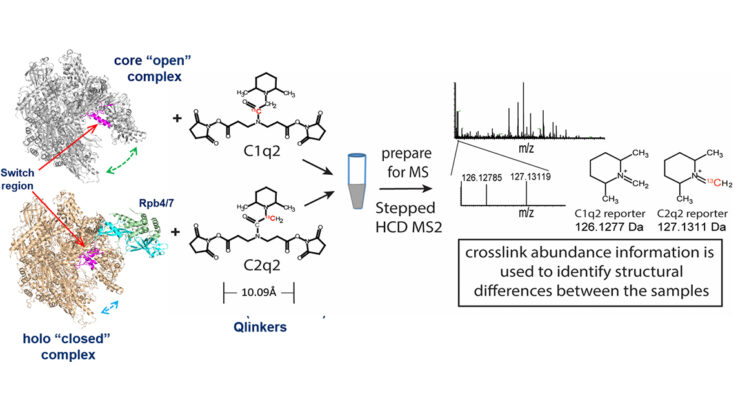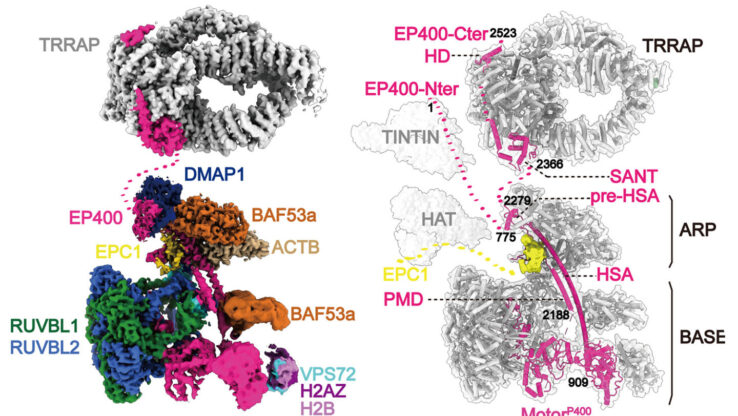New Structural Map Helps To Understand Aggressive Tumors
 ranish.isbscience.org/2014/08/18/new-structural-map-helps-to-understand-aggressive-tumors/
ranish.isbscience.org/2014/08/18/new-structural-map-helps-to-understand-aggressive-tumors/
3 Bullets:
- Aggressive tumor growth is linked to high activity of a macromolecular assembly called RNA polymerase I.
- ISB and FHCRC researchers collaborate to map the architecture of the assembly using a powerful crosslinking-mass spectrometry (CXMS) technology.
- Structural maps provide important insights into therapeutic targets for cancer treatment.
By Mark Gillespie
Rapidly growing tumor cells require large amounts of protein for their survival. This increased protein synthesis, or translation, can be traced back to elevated expression levels of RNA polymerase I, a macromolecular assembly that produces a major component of the translational machinery. Researchers at the Institute for Systems Biology, in collaboration with the Fred Hutchinson Cancer Research Center, have mapped the architecture of several key components of the yeast RNA polymerase I complex. This research, published online in Nature Structural & Molecular Biology on Aug. 17, 2014, reveals exciting new insight into potential therapeutic avenues for cancer treatment.
Title: Architecture of the Saccharomyces cerevisiae RNA Polymerase I Core Factor Complex
Publication: Nature Structural & Molecular Biology
Authors: Bruce A. Knutson, Jie Luo, Jeffrey Ranish, and Steven Hahn
Link: nature.com/nsmb/journal/vaop/ncurrent/full/nsmb.2873.html
Drug therapies targeting RNA polymerase I are fairly limited, due in part to a lack of understanding of the important structural features of this large complex. ISB’s Jeff Ranish, associate professor, and Jie Luo, research scientist, have developed and applied a powerful crosslinking-mass spectrometry (CXMS) technology to create a map of how yeast Core Factor (CF) proteins assemble with the RNA polymerase I complex. Generating this map would not have been feasible using standard structural biology techniques. With CXMS, protein regions within extremely close proximity to each other are chemically linked together, and then identified using state-of-the-art mass spectrometry and computational approaches. This information is used to assemble a structural map of the protein complex, revealing how the complex forms and which regions are important for assembly and function.
Importantly, the interaction networks formed between these proteins occur within regions that are highly similar to the human complex, suggesting the complexes are comparable and making this research highly relevant to understanding the molecular basis for human cancer.
About Mark Gillespie: Mark is a postdoc in the Ranish Lab and a member of the ISB Editorial Board.





